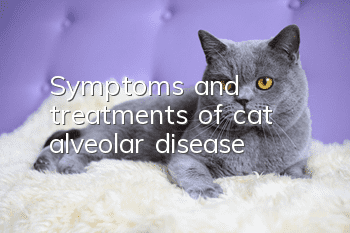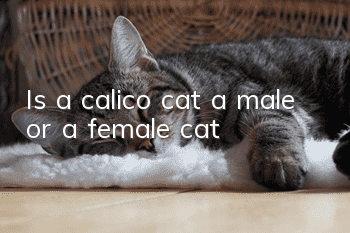Symptoms and treatments of cat alveolar disease

What is the cause of feline alveolar disease
Feline nematodesis, also known as nematodesis, is a common parasitic disease that can affect both dogs and cats. Because the disease is similar to ascariasis, it is often misdiagnosed. The worms of Ascoptera worm are adsorbed on the mucous membrane of the stomach or duodenum with two well-developed lips, causing disease in dogs and cats.
This type of nematode is thick and muscular. Male worms are 13 to 45 ram long, and female worms are 15 to 60 ram long. The size of the eggs is 42~60, amX29~42pro. When the eggs are excreted with the feces, there are larvae inside the eggs. Encapsulated infective larvae of Ascoptera nematodes are present in a variety of animals such as beetles, cockroaches, and crickets, and mice and frogs can serve as vector hosts. Dogs and cats become infected by ingesting intermediate hosts or parasite-carrying transfer hosts. The larvae develop directly into adults, causing disease in animals.
What are the symptoms of feline alveolar disease
Dogs and cats infected with Alveolar nematodes are usually caused by ingesting an intermediate host. The disease will have a certain impact on the cat's appetite and spirit. In the long run, it will cause malnutrition and weight loss in the cat.
Most cases mainly involve digestive system diseases, vomiting, bloody vomitus, and black tar-like stools. Mildly sick cats may also suffer from loss of appetite and weight loss, while severe cases may cause emaciation, anemia and weakness. The main pathological changes are gastritis, gastric hemorrhage and duodenitis.
What are the methods to treat cat nematode disease?
Ascopterygium is a parasitic disease that has a great impact. It has great damage to the health of cats. Sick cats will have symptoms such as weight loss, anorexia, and vomiting. Treatment measures should be taken as soon as possible for sick cats to avoid worse effects.
To treat this disease, pyrantel can be used. The dose is calculated based on the amount of pyrantel. For dogs, it is 5 mg/kg body weight. It should be administered orally once; for cats, 10 mg/kg should be used for three weeks. For patients with constipation, intestinal It is contraindicated for dogs and cats with obstruction, poor liver function and circulatory disorders, as well as dogs and cats that have recently suffered from infectious diseases or show symptoms of infectious diseases. It is also prohibited to use on animals under 10 days old or weighing no more than 0.5kg. Carbon disulfide treatment can also be used. If the sick cat has severe vomiting and anemia, fluids should be replenished and bleeding should be stopped first to enhance the cat's resistance, and then dewormed.
- How to tame a British Shorthair cat
- There are many fleas, how to deworm cats externally?
- Do cats eat sausages?
- What money must be spent on raising a cat?
- What causes red pimples on a cat’s chin?
- What should I do if my cat doesn’t eat hair removal cream?
- What should I do if my female cat is in heat and keeps meowing?
- Reasons why cats grind their claws and scratching training
- What are the signs that a cat is about to give birth?
- What do Ragdoll cats eat to make their hair pop?



